- Home
- Patrick Robinson
U.S.S. Seawolf
U.S.S. Seawolf Read online
U. S. S. Seawolf (2000)
By: PATRICK ROBINSON
-- Synopsis
Silent and lethal, USS Seawolf, the US Navy's most up-to-date stealth submarine, is on an ultra secret mission - to spy on China's brand new, hugely-improved Xia-Class submarine. The Xia is the latest sign of China's burgeoning Naval build-up. With American security under greater threat than ever before, Seawolf's mission becomes increasingly important - and increasingly urgent. But that urgency could be Seawolf's undoing. Moving into ever more dangerous waters, Commander Crocker knows that disaster could be only moments away. And then his Executive Officer, Linus Clarke, oversteps the mark, causing a collision with a Chinese warship. Seawolf's entire crew is taken captive. Zhang Yushu, Commander-in-Chief of the Chinese Navy, all too aware that the American government will try to rescue their sailors, has them moved to a top security prison. In Washington, Admiral Arnold Morgan, furious at the disaster in the South China Sea, is determined to get the crew! back and uses the loss of Seawolf to instigate a pet project - the formation of a new, ultra-secret Hit Squad. Yet, even as the team is put together, led by Navy SEAL commander Major Rick Hunter, the Chinese are making sure they extract as much information as possible from their captives, by whatever means necessary. And, with the SEAL team on its way, Zhang Yushu is close to finding out that among his valuable acquisitions is a prize greater than all the rest put together: the President's son. Linus Clarke's real identity has been carefully hidden from everyone, even his fellow crew-members. But Morgan knows and is one of the few people aware of how desperate the situation really is. The President is determined to get his son back, whatever the cost. And with Clarke about to crack under the pressure, the fall-out could go all the way to the White House itself.
PROLOGUE
1330. Wednesday, April 27. 2005.
Naval Air Tracking Station.
West of Hsinchu, North Taiwan.
Since first light, they had been observing the blue-water Fleet of the People’s Liberation Army/Navy moving menacingly back and forth in a classic “racetrack” pattern, 50 miles offshore. Twenty-two warships in total, including the new 80,000-ton aircraft carrier from Russia, so new it did not yet have a name.
The Taiwanese had nervously tracked the destroyers of mainland China: the Luhus, the old Ludas and the new Luhai; they’d logged the surface-to-surface missiles unleashed in short fireballs by the Jiangwei frigates, just as they had done three times before in the previous 18 months.
They had watched the fleet move ever nearer, then finally cross the unseen dividing line down the middle of the Strait of Taiwan and continue into Taiwanese territorial waters. Instantly the supervisors signaled Tsoying, their main naval base, and the automatic alert to the U.S. Pacific Fleet in Pearl Harbor flashed onto the satellite.
Two hundred miles east of Taiwan, the American admiral on the giant U.S. Nimitz-class aircraft carrier John C. Stennis signaled his warships west. And the massively armed, 12-strong guided-missile fleet out of San Diego glowered, then turned their bows arrogantly back toward their friends on the independent island, which now felt the hot breath of the Chinese dragon.
But at 1357 on that clear, cool April day in the Taiwan Strait, every alert there had ever been in the tracking stations of Taiwan faded into obsolescence. Mainland China suddenly fired a big, short-range land-attack cruise missile straight at the capital city of Taipei.
The military tracking radars in Taiwan’s coastal station west of Hsinchu picked it up 45 miles out, hurtling in over the Strait at 600 mph, low-level, no higher than 200 feet, on a varying course around zero-eight-zero, right out of Fujian Province. At first they thought it was an aircraft overflying the Chinese fleet, but it was too fast and too low, making 10 miles every minute.
There was no time to shoot it down, and decoys were useless against the kind of preprogammed inertial navigation system used in a Russian-designed M-11 cruise, which this most certainly was. The military barely had time to assess the danger before the missile came screaming in over the coastline, plainly visible to any local citizen who happened to look upward.
At the time there was heavy traffic all along the Taipei West Coast Freeway, and one military truck driver spotted it, couldn’t believe his eyes, and drove straight into a tourist bus, ramming it right through the central guardrail into the path of oncoming traffic and causing a 59-vehicle pileup in which 14 people were killed.
Simultaneously, the emergency radio procedures desperately urged people to remain in their homes, if possible below ground, in the face of imminent missile attack. No one knew whether the cruise carried a nuclear-tipped warhead, but the danger of radiation was uppermost in the minds of the authorities.
Everyone in air traffic control at CKS International Airport, four miles from the traffic pileup, watched the missile streak across Taiwanese airspace, both onscreen and from the big viewing windows. It seemed to make a slight course adjustment and then rocketed across the city of Taoyuan. It was still making 600 mph and maintaining height as it cleared the railroad terminal, passing dead overhead the new McDonald’s off Fuhsing Road
.
Right now it was 120 seconds from Taiwan’s capital and all the military could do was warn the populace to take cover. They informed the U.S. and United Nations Headquarters that they were under immediate missile attack from China, and at 1406 the cruise came in sight of Taipei.
But, to the astonishment of the military, the missile kept right on going, straight across the center of the city, over the Tanshui River and on to the second-largest container port in the country, Keelung, up on the northeast coast. But it did not stop there, either, but headed right on out into the Pacific, where it crashed and blew up 30 miles off Taiwan’s coast.
The Taiwan military protested in the strongest terms to Beijing, seeking assurances that there were no more missiles on the way. The Prime Minister himself contacted Beijing directly, to deliver an icy warning to China’s Paramount Ruler that Taiwan’s armed forces would fight to the last inch of their ground to preserve their independence. And, if they had to, Taiwan would hit back at China with U.S.-built guided missiles, which were far superior to anything the Chinese had in their current arsenal.
“We may go,” the Prime Minister concluded. “But we’ll take Beijing with us. That I promise.”
The Chinese neither apologized nor gave any assurances that such a thing would not happen again.
0900 (local). Wednesday, April 27, 2005.
Office of the National Security Adviser.
The White House, Washington.
Admiral Arnold Morgan was listening with mounting fury to the reason why the Chinese ambassador to Washington was not able to report to the White House in the next 20 minutes.
“He’s in a conference, Arnold,” insisted his secretary. “They won’t even put me through to his assistant. They say they’ll get a message to him and he’ll call you in a half hour. He’s actually speaking with the General Secretary of the Communist Party, who you know is in town dining with the President tonight.”
“Kathy O’Brien, upon whose very footsteps I worship the immediate airspace,” growled the NSA. “I want you to listen to me very carefully. I do not care if Comrade Ling Fucking Guofeng, Honorable Ambassador to our nation, is in direct spiritual contact with Chiang Kaishek, or speaking at this very moment to the deranged ghost of Mao Zedong or any of those other goddamned coolies who rose to power. I want him here in twenty minutes, otherwise he will be Ling Fucking Guofeng, FORMER ambassador to our country. I’LL HAVE HIM DEPORTED BY SEVENTEEN-HUNDRED TONIGHT.”
“Arnold, I will pass on your wishes to the highest possible authority.”
Seventeen minutes later, Ambassador Ling was escorted into Admiral Morgan’s offic
e.
“Sit-down. This is serious. And listen.” The admiral was not in a gracious mood.
The ambassador sat, and said with the utmost courtesy, “Would it be out of order, Admiral, for me to wish you good morning?”
“Yes, it would, since you mention it. I’m more concerned with the fact that a few hours ago, your goddamned pain-in-the-ass country almost caused a fucking war.”
“Admiral, surely you are not referring to that insignificant incident in our Taiwan Strait?”
“Insignificant? You crazy sonsabitches threw an M-11 cruise missile straight over the city of Taipei. You call that insignificant?”
“Admiral, I have received a most reliable communiqué that it was a mere accident. The missile somehow became out of control…in any event it failed safe, and flew into the Pacific. Quite harmless.”
“Ling, I don’t believe you. I think you guys have taken up a new twenty-first-century sport called Frightening the Taiwanese to Death—I mean, you had a battle fleet in their territorial waters at the precise time the missile came in. What the hell did you expect them to think?”
“Well, I can appreciate their anxiety.”
“Ling, what would you have done if the Taiwanese had had a little more time, and our Carrier Battle Group had been a lot closer? How about if the Taiwanese had started throwing missiles back? And we decided to take out a couple of your Navy bases, maybe knock out a few of your missile sites? What then?”
“Admiral, I do not think that would have been very wise, for either the Taiwanese or yourselves. We are no longer the backward, militarily unsophisticated nation you once considered us. These days we have missiles to match your own, in both power and range. Serious intercontinental ballistic missiles. ICBMs, Admiral. Made in China. You would do well to remember that.”
“Ling, the most you guys have ever done is to employ a group of devious little spies and sneak thieves to try and steal from us. But when you get the stuff it’s always too advanced for you to adapt. You’ve had more missile test failures than even I can count. You always think you can match us for military hardware and technology. But you never can. And you never will. Any more than we’re any good at chicken chow mein.”
Ambassador Ling ignored the insult. “Admiral,” he said, “your assessment of our capabilities was probably accurate for many years. But no longer. We have effective long-range missiles now. We are as big a threat to you as you have always been to us.”
“Maybe. But we don’t go around launching cruise missiles to fly over the capital cities of other countries, terrifying the populace, edging nations into war. So I’m warning you and your government, right here and right now: You wanna play hardball with the US of A over the nation of Taiwan, you better take a damn close look at the rule book. Because when we decide to play, we play for keeps.”
Ambassador Ling did not answer immediately. Instead he looked thoughtful, academic, like the professor he once was. And when he spoke it was quietly, and carefully considered.
“Nonetheless, Admiral,” he said, “should it come to an ICBM contest between us, I wonder if you would really care to swap Taiwan for Los Angeles.”
1
Friday, October 7, 2005.
Pacific Ocean. 120 miles west-southwest of
San Diego, California.
The darkness crept ever westward through low, overcast skies, and the gusting northwest breeze whipped white crests onto the long wavetops. At this time of the evening, in the 20 minutes of no-man’s time between sunset and nightfall streaming in over the immense ocean, the Pacific takes on a deeply malevolent mantle. Its awesome troughs and rising waves glisten darkly in the last of the light. There’s no bright, friendly phosphorescence in the bottomless waters out here. To stare down at the black seascape, even from the safe reassuring deck of a warship, is to gaze into the abyss. Oh Lord, your ocean is so vast, and my boat is so small.
Eight hundred feet into the abyss, way beneath the twilight melancholy of the surface, USS Seawolf thundered forward, making almost 40 knots, somewhere south of the Murray Fracture Zone. The 9,000-ton United States Navy attack submarine was heavily into her months of sea trials, following a massive three-year overhaul. Seawolf was not at war, but a passing whale could have been forgiven for thinking she was. Forty knots is one hell of a speed for a 350-foot-long submarine. But Seawolf had been built for speed, constructed to lead the underwater cavalry of the Navy, anywhere, anytime. And right now she was in deep submergence trials, testing her systems, flexing her muscles in the desolate black wilderness of America’s western ocean.
Powered by two 45,000-horsepower turbines and a state-of-the-art Westinghouse nuclear reactor, Seawolf was the most expensive submarine ever built. Too expensive. The Navy was permitted to build only three of her class—Connecticut and USS Jimmy Carter were the others—before budget restraints caused the cancellation of these jet-black emperors of the deep. Over a billion dollars had been spent on her research and development before Seawolf was commissioned in 1997.
Now, after her multimillion-dollar overhaul, the submarine was, without question, the finest underwater warship in the world, the fastest, quietest nuclear boat. At 20 knots there was nothing to be heard beyond the noise of the water parted by the bulk of her hull. She could pack a ferocious wallop, too. Seawolf was armed with a phalanx of Tomahawk land-attack missiles that could travel at almost 1,000 mph to a target 1,400 miles distant. She could unleash a missile with a 454-kilogram warhead and hit an enemy ship 250 miles away. She bristled with eight 26-inch torpedo tubes, launching bases for big wire-guided Gould Mark 48s, homing if necessary to 27 miles. Highly effective, these weapons offered a kill probability of 50 percent, second only to the British Spearfish.
Seawolf carried sonars estimated as three times more effective than even the most advanced Los Angeles-class boats. She used both TB16 and TB29 surveillance and towed arrays. For active close-range detection she used the BQS 24 system. Her electronic support measures (ESM) were nothing short of sensational. Any ship anywhere within 50 miles could not move, communicate, or even activate its sonar or radar without Seawolf hearing every last telltale sound. She was not a gatherer of clan-destine information, she was an electronic vacuum cleaner, the last word in the U.S. Navy’s most secretive, private, advanced research.
And Captain Judd Crocker was darned proud of her. “Never been a submarine to match this one,” he would say. “And I doubt there ever will be. Not in my lifetime.”
And that was worthwhile praise. The son of a surface ship admiral, grandson of another, he had been born into a family of Cape Cod yacht racers, and he had been around boats of all sizes since he could walk. He never inherited his father’s unique talents as a helmsman, but he was good, better than most, though destined always to be outclassed by the beady-eyed Admiral Nathaniel Crocker.
Judd was 40 years old now. A lifelong submariner, he had served as Seawolf’s first Executive Officer back in 1997 and commanded her five years later. He received his promotion to Captain just before she came out of overhaul, and resumed command in the high summer of the year 2005.
That was the culmination of all his boyhood dreams, and the culmination of a plan he had made at the age of 15 when his father had taken him out to watch the annual race from Newport around Block Island and back. The admiral was not racing himself, but he and Judd were guests on board one of the New York Yacht Club committee boats. It was a day of intermittent fog out in the bay, and several competitors had trouble navigating.
Even Judd’s committee boat was a little wayward in the early afternoon, straying too far southwest of the island, about a half mile from the point of approach of a 7,000-ton Los Angeles-class submarine rolling past on the surface toward the Groton submarine base. The sun was out at the time, and Judd had watched through binoculars one of the great black warhorses of the U.S. Navy. He was transfixed by the sight of her, noting the number 690 painted on her sail. He almost died of excitement when a couple of the officers on the brid
ge waved across the water to the committee boat. And he had stared after the homeward-bound USS Philadelphia long after she became too small to identify on the horizon.
Submarines often have that effect on nonmilitary personnel. There is a quality about them, so profoundly sinister, so utterly chilling. And Judd had gazed upon the ultimate iron fist of U.S. sea power with barely contained awe. In his stomach there was a tight little knot of apprehension, except that he knew it was not really apprehension. It was fear, the kind of fear everyone feels when a 100 mph express train comes shrieking straight through a country railroad station, a shuddering, ear-splitting, howling display of monstrous power that could knock down the station and half the town if it ever got out of control. The difference was that the submarine achieved the same effect in menacing near-silence.
Judd Crocker was not afraid of the submarine. He was fascinated by a machine that could demolish the city of Boston, if it felt so inclined. And as he turned back to the infinitely lesser thrills of the yacht race, he was left with one thought in his mind. What he really wanted was to drive the USS Philadelphia, and that meant the United States Naval Academy at Annapolis three years hence. From that moment on, Judd never took his eye off the ball, which was why, a quarter of a century later, he commanded the most awesome submarine ever to leave a shipyard.

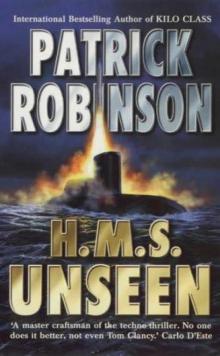 H.M.S. Unseen am-3
H.M.S. Unseen am-3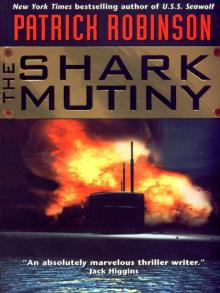 The Shark Mutiny (2001)
The Shark Mutiny (2001)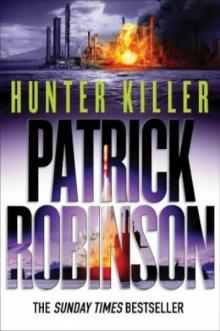 Hunter Killer am-8
Hunter Killer am-8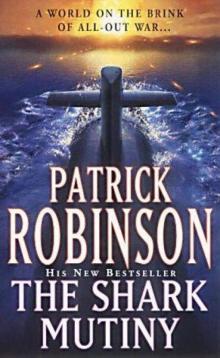 The Shark Mutiny am-5
The Shark Mutiny am-5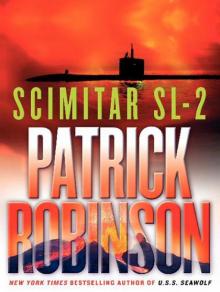 Scimitar SL-2
Scimitar SL-2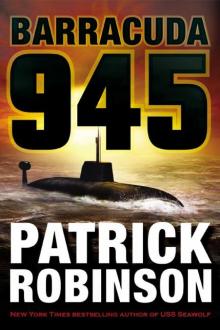 Barracuda 945 am-6
Barracuda 945 am-6 Hunter Killer
Hunter Killer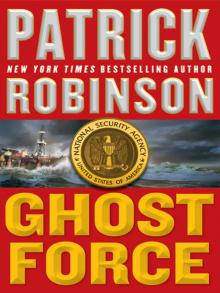 Ghost Force
Ghost Force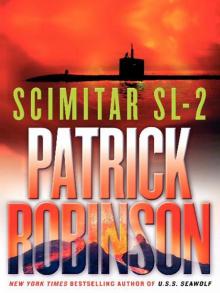 Scimitar SL-2 (2004)
Scimitar SL-2 (2004) Kilo Class am-2
Kilo Class am-2 The Lion of Sabray
The Lion of Sabray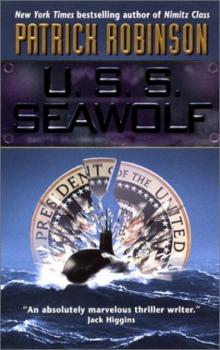 U.S.S. Seawolf am-4
U.S.S. Seawolf am-4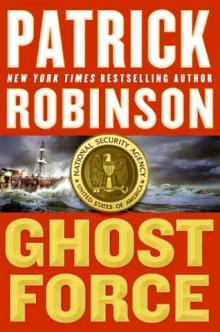 Ghost Force am-9
Ghost Force am-9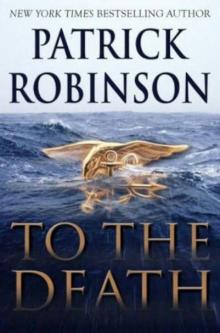 To the Death am-10
To the Death am-10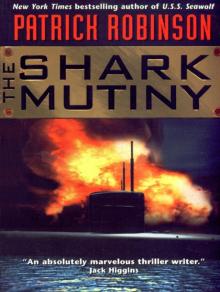 The Shark Mutiny
The Shark Mutiny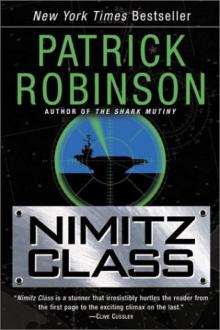 Nimitz Class am-1
Nimitz Class am-1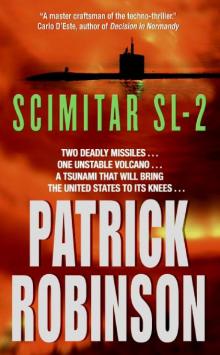 Scimitar SL-2 am-7
Scimitar SL-2 am-7 Barracuda 945
Barracuda 945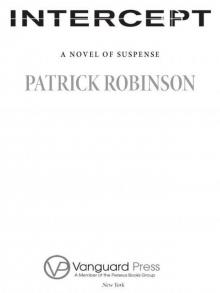 Intercept
Intercept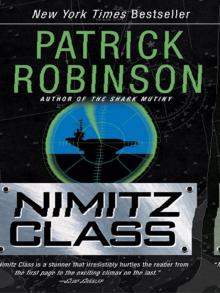 Nimitz Class (1997)
Nimitz Class (1997)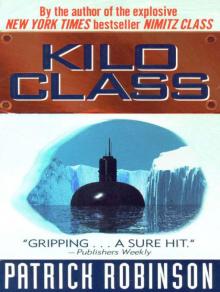 Kilo Class
Kilo Class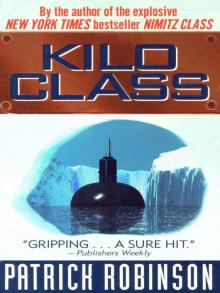 Kilo Class (1998)
Kilo Class (1998) Diamondhead
Diamondhead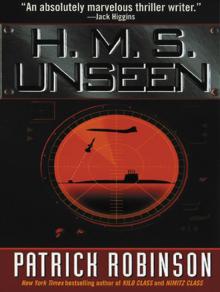 H.M.S. Unseen
H.M.S. Unseen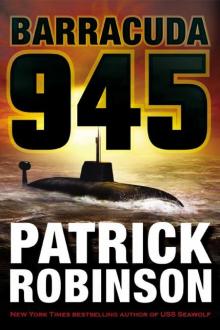 Barracuda 945 (2003)
Barracuda 945 (2003)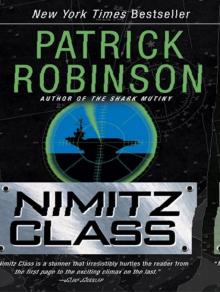 Nimitz Class
Nimitz Class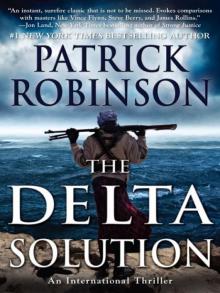 The Delta Solution
The Delta Solution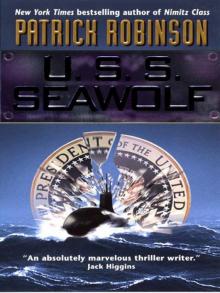 U.S.S. Seawolf
U.S.S. Seawolf